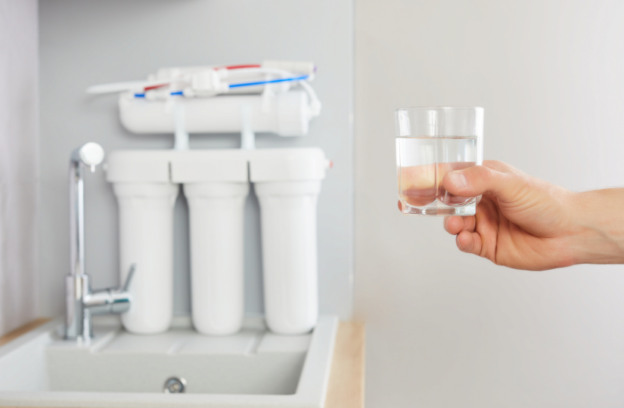What Is Reverse Osmosis Water?
Everyone appreciates having access to safe drinking water. It’s difficult to make a decision with so many filtration options available. Carbon filters on refrigerators and filter pitchers are the most common ways to filter water. Carbon filters are the most cost-effective type of filtering. Despite the cost reductions, filters aren’t infallible because they only remove a small percentage of impurities. Reverse osmosis is, without a doubt, one of the most effective methods for ensuring that your drinking water is clean and pure. So, what exactly is reverse osmosis? Let’s get started.
The filtering technique reverse osmosis, or RO, eliminates up to 99 percent of pollutants from water. According to studies, RO can remove up to 99.9% of drugs from drinking water. Because the most typical filters only remove around 90% of drugs, a pharmaceutical removal rate of 99.9% is fantastic to hear. Water is pushed through a semi-permeable surface in reverse osmosis.
Traditional osmosis works by passing a dilute solution through a semi-permeable surface and into a higher-concentrated solution to equalize concentration levels. Reverse osmosis is distinct in that it necessitates the application of force. The membrane is first used to pass contaminated water through. The impurities are then separated from the pure water on one side.
How Does It Work?
Filtration by reverse osmosis is a multi-step procedure. Initial filtration, reverse osmosis, special filtration, remineralization, and drainage are the five steps that get your water as clean as possible. Read on to learn how reverse osmosis works and how it can help you and your family drink clean water.
Where Does Filtration Start?
Water is pumped from your water pipes into a series of sediment and high-capacity carbon filters for this first step of filtering. The water is then stored in a holding chamber. Mineral deposits and pollutants such as chlorine are removed by the first filters.
Water Filtration by RO
The water in the holding chamber is filtered using a reverse osmosis system at this point. The membrane prevents 99 percent of pollutants from entering the water supply. Because the amount of impurities in the water affects the pressure, the time it takes to filter can vary.
Filtration with a Difference
Filtration at a higher level is known as special filtration. These specialized filters are frequently used to remove lead, VOCs, extra medicines, and other contaminants.
Remineralization
The reverse osmosis method frequently cleans water so thoroughly that it removes essential elements and minerals that give water its pleasant flavor. The clean water is passed via a mineralizer and into the RO storage tank during the remineralization process.
Drainage
Finally, the wastewater will be emptied into the drain by the RO system. The reverse osmosis storage tank holds treated water until you need it. Water will flow directly to the tap if you use a tankless RO system.
Is It Better to Buy a Whole House System?
When it comes to customizing, you have a lot of possibilities. Some people merely want to filter their tap water, while others want a system that covers their entire home. The major factor that will alter as a result of system size will be the cost. Start with a single-fixture system to see if it’s something you think is worth the time and money, in our opinion.
Make A Call To The Plumbing Experts
It’s difficult to know where to start when it comes to water filtration systems because there are so many alternatives. Now you understand what reverse osmosis filtration is and why it’s necessary. With that in mind, you may rest assured that your selection will be well-informed. These filtration systems can be difficult to understand. Plumbing Pro’s is here to assist you with the entire process, from selection to installation to upkeep. Give us a call, and we’ll get you some clean water right away!

